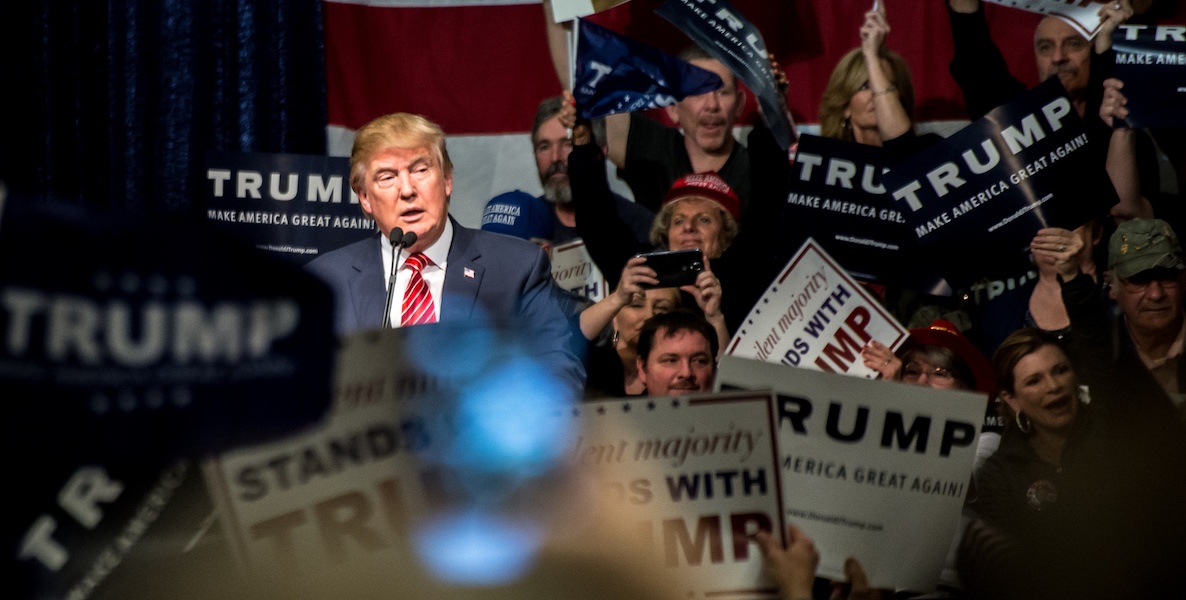One takeaway from Tuesday’s election is that nothing really changed in Philadelphia — and in many important ways it’s true, starting with the fact that (as far as we can tell) so few people voted it could hardly be called Election Day.

Prefer the audio version of this story? Listen to this article in CitizenCast below:

But another take, especially if you keep in mind the primary, is that change is slowly happening all around us—there’s the state voting reforms that will make voting easier in 2020, the surge of candidates for Council-at-large, a couple of critical upsets in the spring, and, of course, Kendra Brooks, the Working Families Party candidate who secured a Council-at-large seat—the first third party Councilmember in modern history.
![]() Earth-shattering? No. But could it be that voters of Philadelphia are looking to break free of the same old way of doing politics in America’s first city?
Earth-shattering? No. But could it be that voters of Philadelphia are looking to break free of the same old way of doing politics in America’s first city?
“You don’t have to have 2020 vision to see things are badly awry in our democracy,” says J.J. Balaban, a Democratic campaign consultant with the Win Company. “There’s a feeling that the old way of doing things isn’t necessarily the right way anymore. My whole job is figuring out how to win within the box—but what if there’s a problem with the box?”
In New York City on Tuesday, voters addressed this very thing when they approved a ballot measure to enact ranked choice voting (RCV) in their local primary and special elections starting in 2021. That means that rather than vote for just one mayoral candidate in 2021, New Yorkers will be asked to rank their top five candidates in the order of their preference.
If one candidate has a majority, they’ll win, just like the current system. If not, the last-place candidate will be eliminated, and their first-place votes will go to whomever their voters chose second. That process will continue until there is a clear majority winner.
New York City will be the most populous American jurisdiction to enact RCV, which the state of Maine adopted in 2016, and which several cities around the country also use, some for several years, in their local races: Berkeley, Oakland and San Francisco; Cambridge, Massachusetts; Minneapolis, St. Paul, Santa Fe, and Telluride. Several states, including Alaska, Hawaii and Kansas, will use some version of RCV in the Presidential primary or caucus next year; and it is the norm for some elections in Australia, New Zealand, Northern Ireland and India, the world’s largest democracy, which uses RCV to choose its president.
“With ranked choice voting, you can no longer have an unpopular person eke through,” says Balaban, who made an ad in support of New York’s ballot measure. “You can’t run a strategy of just turning out your base. Even if a candidate won’t be someone’s first choice, they’ll want to be their second choice. So they can’t write off any neighborhoods or voters.”
“You don’t have to have 2020 vision to see things are badly awry in our democracy,” says J.J. Balaban. “There’s a feeling that the old way of doing things isn’t necessarily the right way anymore. My whole job is figuring out how to win within the box—but what if there’s a problem with the box?”
Speaking of unpopular persons, when we first looked at this issue, in the spring of 2016, it was in the heat of the presidential primary season that ended with Donald Trump being the Republican candidate — and, of course, the President of the United States. At the time, Trump was not a favorite of most Republicans: Fewer than half of all Republican primary voters said they’d be happy with Trump as their nominee; both Ted Cruz and Marco Rubio had more supporters in early polling. But under the current system, Trump — who got more primary votes in many of the early states, but not a majority —still came out on top. (No states have yet used RCV in a national race; 2020 will be the first, for a handful of primaries.)
For local context, RCV would not have affected this year’s Mayoral race, or even Mayor Kenney’s 2015 campaign, when he won with over 50 percent of the vote. In 2007, though, then-candidate Michael Nutter got only 36 percent of the vote. In the hotly-contested 2017 primary for district attorney, Larry Krasner got about 38 percent of the vote—significantly more than his nearest competitor, Joe Khan, at 20 percent, but not by any means a majority. And in this year’s Democratic primary for Council-at-large, it could have been disruptive: The highest vote-getter in the primary, Helen Gym, got just 16 percent of the votes. Who knows how things might have turned out if we’d been able to rank all our choices?
![]() To be clear, RCV is not universally admired as a solution to our voting woes. California Gov. Gavin Newsom last month vetoed a RCV bill that had overwhelming support in the state legislature, for the same reason he opposed San Francisco’s passage of RCV in 2002: “Where it has been implemented, I am concerned that it has often led to voter confusion and that the promise that ranked choice voting leads to greater democracy is not necessarily fulfilled,” Newsom said, urging more study of the issue.
To be clear, RCV is not universally admired as a solution to our voting woes. California Gov. Gavin Newsom last month vetoed a RCV bill that had overwhelming support in the state legislature, for the same reason he opposed San Francisco’s passage of RCV in 2002: “Where it has been implemented, I am concerned that it has often led to voter confusion and that the promise that ranked choice voting leads to greater democracy is not necessarily fulfilled,” Newsom said, urging more study of the issue.
Voter confusion is certainly a concern. On the other hand, voters managed pretty well with new voting machines on Tuesday — machines that would allow for RCV — and are probably going to do just fine with the changes passed last month by the state legislature.
State Sen. Anthony Williams, fresh off his second primary loss to Kenney, actually proposed enacting RCV in Philly as part of that package of reforms, along with an open-primary system that would allow voters of any party to vote for any candidate. (Those changes didn’t make it to a vote this time around.)
And voters may appreciate other benefits of RCV: Less negative campaigning and more direct outreach to more voters. If the growing list of potential 2023 mayoral contenders needed to ensure they rank first or second in voters’ choices, they would need voters to know who they are, to reach more people where they live, explain their platforms more clearly, and go beyond just the calculus of demographics to get their votes. Similarly, slamming a voters’ favorite candidate is not likely to garner a second- or third-place ranking. Toning down increasingly hostile political rhetoric is good not just for campaigning, but also for governing—and arguably for turnout.
Frankly, anything that gets more people paying attention to local elections—and more electeds paying attention to the people—seems like an idea our democracy could use right now.
“You don’t really see Coke and Pepsi attacking each other, because they know that will make people fundamentally less inclined to drink cola,” says Balaban, who admits to creating a fair amount of negative ads on behalf of his clients. “There are times and places to do comparative ads, but I think you’ve seen some of the disaffection with politics is people going negative with each other.”
That disaffection is largely to blame for the fact that we have too many elections being decided by too few people — a consequence of low turnout, and of a system that allows for a candidate to sail by without even convincing a majority of those who decide to cast a ballot. And frankly, anything that gets more people paying attention to local elections — and more electeds paying attention to the people — seems like an idea our democracy could use right now.
Photo courtesy rawpixel / Pixabay



